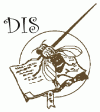



Hedgley, E.J., and M.J. Lamb. 1999. An alternative to ether.
Dros. Inf. Serv. 82: 140. View PDF
Although diethyl ether is traditionally used for anaesthetizing Drosophila in genetics experiments, it is highly inflammable and subject to possible abuse. It is therefore a serious potential hazard in teaching laboratories. Chloroform is a possible alternative anaesthetic but it has both acute and chronic toxic effects. We have found that methylene chloride (dichloromethane) is a cheap and adequate noninflammable substitute for ether. Methylene chloride is ten times less toxic than chloroform and, unlike the latter, it appears not to generate chronic ill effects, although of course it is still necessary to ensure that, as with ether or chloroform, the laboratory in which it is used is adequately ventilated.
For anaesthetic purposes one may use methylene chloride in exactly the same way as ether. The length of time that the flies need to be left in the vapor and the time taken for recovery are similar to those for ether. However, the behaviour of the flies while anaesthetized is rather different. Initially the wings of the flies may be held vertically above the body, i.e., they may appear to be “over-etherised”, but this effect is temporary. The flies also tend to twitch in a way which may be slightly disconcerting to Drosophila workers who are used to handling etherised flies. Although this twitching might possibly detract from the use of methylene chloride for some experiments, e.g., those involving bristle counting, we have in general found no difficulty in training students to use it for work involving mutants.